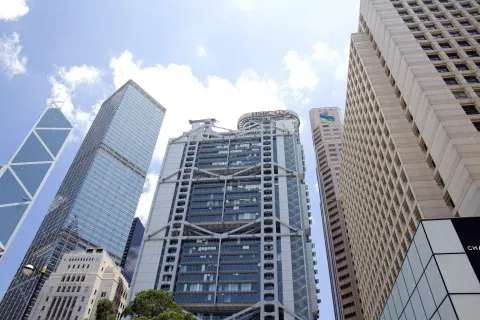
Hong Kong banks to benefit from HKMA's proposed loss-absorbing capacity rules
These will facilitate loss absorption and recapitalization in case of bank failure.
As the Hong Kong Monetary Authority (HKMA) proposed rules for the loss-absorbing capacity (LAC) of banks, Moody's Credit Outlook reports that these will benefit banks by facilitating loss absorption and recapitalization in the event of failure. Banks will be required to increase their capital and liabilities available to absorb losses.
Here's more from Moody's:
The substantial LAC will benefit depositors and other senior unsecured creditors because the LAC’s subordinated status will absorb losses at failure ahead of senior creditors and depositors. Additionally, other things being equal, a larger layer of any given class of debt will benefit the ratings of that class given that potential losses would be spread over a larger pool of investors.
The LAC requirements will apply only to banks deemed a resolution entity, which will likely include, at a minimum, Hong Kong’s six domestic systemically important banks (D-SIBs): The Hongkong and Shanghai Banking Corp. Ltd., Bank of China (Hong Kong) Limited, Hang Seng Bank Limited, Standard Chartered Bank (HK) Limited, Industrial and Commercial Bank of China (Asia) Ltd., and Bank of East Asia, Limited. Banks that are deemed too small to have a systemic effect in case of failure and can be resolved by liquidation will not be designated a resolution entity and will not be subject to the LAC requirement.
Although the new rules are broadly aligned with the Financial Stability Board’s principles and term sheets, one feature that is particularly relevant for Hong Kong is the possibility that material subsidiaries incorporated in Hong Kong satisfy the requirement through internal LAC rather than external LAC. Internal LAC will allow a subsidiary to pass up losses to a resolution entity incorporated outside of Hong Kong, to be absorbed by that entity’s external LAC. The requirement for internal LAC will be set at 75%-100% of the equivalent requirement for external LAC. The requirement to issue internal LAC rather than external LAC would occur in situations where the HKMA has determined that a Hong Kong bank’s parent outside of Hong Kong is the resolution entity and is particularly relevant for Hong Kong given its status as an international finance center where most global SIBs have operations. Indeed, five of the six D-SIBs (all except Bank of East Asia, Limited) have parents incorporated outside of Hong Kong.




![Lorem Ipsum [ABF 1]](https://cmg-qa.s3.ap-southeast-1.amazonaws.com/s3fs-public/styles/exclusive_featured_article/public/2025-03/a_hand_pointing_to_a_futuristic_technology_5b87c9d0e3_1.png.webp?itok=2w0y1WhS)


![Cross Domain [Manu + SBR + ABF + ABR + FMCG + HBR + ]](https://cmg-qa.s3.ap-southeast-1.amazonaws.com/s3fs-public/styles/exclusive_featured_article/public/2025-01/earth-3537401_1920_4.jpg.webp?itok=WaRpTJwE)







 Advertise
Advertise

